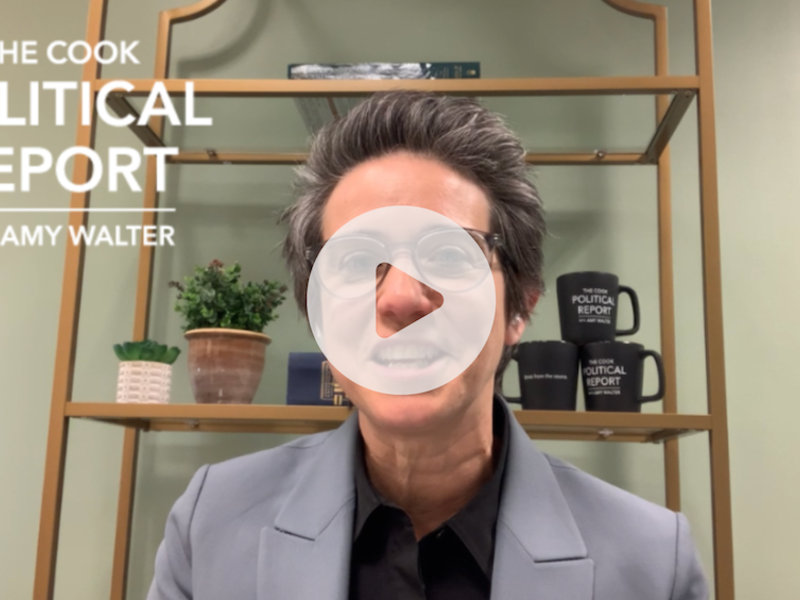
Almost 50 years ago, Memorex introduced a new and even higher-quality audio tape with the advertising tagline “Is it live or is it Memorex?” suggesting that the fidelity of their new tape was so good it could not be distinguished from a live performance. Several ads featured a wine glass exploding from music recorded to the tape, one with jazz great Ella Fitzgerald at her best. Today, we face a similar question in politics: Is a trend real, or does it just appear to be real?
Specifically, is Democrats' political position actually improving, or is it a mirage in a desert of bad news?
Two weeks ago this column looked at the potential consequence if former President Trump announced a presidential campaign bid before the Nov. 8 election, suggesting that shifting the national spotlight away from President Biden, the Democratic Congress, and a worrisome economy might not be in the best interest of the GOP, a party that seemed on the cusp of a very good year.
Last week it focused more on the Senate, wondering whether problematic candidates in Georgia and Pennsylvania could cause Republicans to come up short, even in a political environment shaped by an unpopular Democratic president and a tanking economy, and in states that are not naturally hostile to Republicans. According to the newly released Cook Political Report Partisan Voting Index (now enjoying its 25th birthday!), Pennsylvania votes 2 percentage points more Republican than the country as a whole, while Georgia has a 3-point lean toward the GOP.
One thing that has been noted by both Democratic and Republican pollsters is that given the circumstances, Republicans seem to be underperforming on the generic congressional ballot test. Given the political fundamentals, one might expect Republicans to be ahead at least five or six points. Instead, the GOP leads by a scant 0.9 percentage points in the RealClearPolitics average and an even narrower 0.3 percentage points in FiveThirtyEight’s measurement. Many top election forecasters and political scientists consider “the generic” to be the best single predictor of which way the House is going, and whether the winds are light, moderate, heavy, or hurricane strength.
But various factors have Democrats wondering whether things have changed, if only a bit. For starters, a relatively underachieving Congress passed into a law the computer chip and China-competition bill, followed closely by an apparent agreement between Senate Majority Leader Chuck Schumer and West Virginia Sen. Joe Manchin for a far-reaching spending package. Senate Republicans, meanwhile, stepped in deep you-know-what opposing a bill to help veterans with health issues resulting from exposure to toxic burn pits.
Biden’s job approval rating has ticked up a notch or two to get him close to 40 percent again. The FiveThirtyEight model also has Democrats favored to hold the Senate. As this column wrapped up, news is breaking that a U.S. drone killed al Qaeda leader and September 11 attack planner Ayman al- Zawahiri in Afghanistan.
As a way of quantifying conventional wisdom, look at the odds a month ago on the PredictIt website. Bettors were giving Republicans an 86 percent chance of winning control of the House and 63 percent odds of winning a Senate majority. Overall, they put a 62 percent chance of Republicans sweeping both, just a point under their Senate chances, which makes sense because if the voter turnout proportions and the issue agenda are good enough for Republicans to win the Senate, it almost certainly means they would be sufficient to win the House, which is an easier nut to crack. It isn’t hard to see how the GOP could win the House but come up short in the Senate.
Since then, Republicans’ chances of winning a House majority are about the same as a month ago, now 87 percent. But in the Senate, the 63 percent chance has shrunk to 52 percent, and winning both has dropped from 62 percent to 50 percent.
I am still a bit skeptical that things have changed enough to change the trajectory of the election in terms of the House. Yet in the Senate, it may be time to stop and call it a 50-50 proposition while we wait for more data. So how real is this? Too soon to say.
The article was originally published for the National Journal on August 1, 2022.








Subscribe Today
Our subscribers have first access to individual race pages for each House, Senate and Governors race, which will include race ratings (each race is rated on a seven-point scale) and a narrative analysis pertaining to that race.